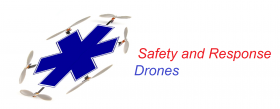Update on WWF effort
Google is quietly funding an arsenal of high-tech law enforcement
equipment, but it’s not for the law enforcement you know. It’s designed
to protect African animals from illegal poachers.
The World Wildlife Fund (WWF) issued an update this week on their Wildlife Crime Technology Project, which received a $5 million Google Global Impact award at the end of 2012. Earlier this week, the WWF issued a report on how the money was used–and, in the process, gave a peak into a normally secretive world of drones and high-tech sensors.
Drones for Good IDEO tumblr
http://drones-for-good.tumblr.com/
Great variety of posts here
Airware Completes Anti-Poaching UAV Field Tests in Africa | Unmanned Systems Technology
Share webpage:Airware Completes Anti-Poaching UAV Field Tests in Africa | Unmanned Systems Technology http://www.unmannedsystemstechnology.com/2014/01/airware-completes-anti-poaching-uav-field-tests-in-africa/
Aerial drones to help protect endangered species of rhino
Endangered White Rhinos such as these could soon be getting some protection from an aerial drone (Photo: Shutterstock)
Aerial drones, whether they be dropping bombs, books or burritos,
have attracted a certain degree of controversy in recent times. While
the potential of the technology is plain to see, many aren’t convinced
that the benefits will outweigh the risks associated with unmanned
vehicles zipping about in the sky above. With its recent field testing
of an unmanned aerial vehicle (UAV) designed to protect an ailing rhino
population, Airware are determined to help the industry shed some of
these negative connotations.
Airware is a California-based company that specializes in the
development of autopilots for unmanned aircraft systems. It recently
teamed up with the Oj Pejeta Conservancy in Kenya to test a drone
equipped with Airware’s autopilot platform and control software that
will allow it to act as both a deterrent and surveillance tool. The
system uses fixed and gimbal-mounted cameras to deliver real-time
digital video and thermal images to rangers on the ground, enabling them
to deploy a security team in the event of an incident.

